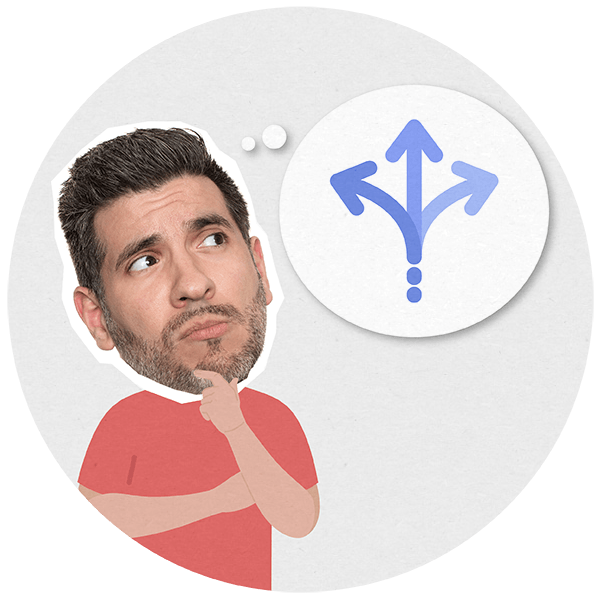Upgrading Dynamics 365 CRM
Upgrading your Dynamics 365 CRM Applications, such as Dynamics 365 Sales or Dynamics 365 Customer Services, is crucial for accessing the latest features, performance improvements, security updates, and ensuring continued support by Microsoft.


Upgrading Your SaaS (Online) Platform
If you're running Dynamics 365 CRM in the cloud, good news – Microsoft handles the heavy lifting. That means no server headaches, no late-night patching, and no scrambling to meet hardware requirements.
Twice a year, Microsoft rolls out release waves packed with new features, performance tweaks, and security updates. These upgrades are automatic, but that doesn’t mean you should sit back and hope for the best.
Here’s how to stay ahead of the curve:
-
Keep your sandbox one version behind production - This gives you a safe space to test the new release before it hits your live system.
-
Use the release notes - They’re not bedtime reading, but they are essential. You’ll find everything from new functionality to deprecated features and potential breaking changes.
-
Then it's test, test, and test again - Customisations, integrations, user workflows - make sure they all play nicely with the new version before you go live.
SaaS upgrades might be simpler than on-premise, but they still need a plan. And if you’re not sure where to start, we’re here to help.
Want to talk to us about upgrading
Upgrading On-Premise Versions
Upgrading Dynamics 365 on-premise isn’t just a click-and-go affair. Unlike SaaS, you’re in charge of the server infrastructure — and that means there’s a bit more heavy lifting involved. From hardware checks to software prerequisites, customisations to careful testing, there’s plenty to think about. But with the right prep and a methodical approach, you can make it a smooth, successful journey.
Start with the Basics
Just like a SaaS upgrade, always kick off by reviewing Microsoft’s latest documentation.Assess your server setup. If it’s looking a bit tired, now’s the time to consider upgrades.
Double-check that your OS, SQL Server version, and .NET framework are ready to support the target build.
Backup is Non-Negotiable
Before you touch a thing, back everything up. That means your database, customisations, configurations - the whole lot. It’s your safety net in case something goes sideways.Use a Staging Environment
Build a clone of your production setup and use it to run through the upgrade first. This is where you can follow Microsoft's step-by-step upgrade path (especially handy if you’re jumping from an older version).Test your customisations, workflows, and integrations thoroughly. Identify any tweaks needed to keep ISV solutions or bespoke features running smoothly.
Ready for Production?
Once staging looks solid, schedule your live upgrade during a quiet period. Replicate your tested upgrade steps and validate everything post-upgrade, keeping a close eye on performance.On-premise upgrades can be chunky — but when done right, they set you up for long-term success.

Is Your Dynamics CRM Running on Borrowed Time?
Is your Dynamics 365 CRM a relic of the past? Running outdated software is a significant risk.
Older CRMs are vulnerable to security threats, lag behind in performance, and miss out on essential updates. If your system predates the move to Dynamics 365 Customer Engagement (around 2016), it’s almost certainly out of Microsoft's support window. And once support ends, that’s it, no patches, no fixes, no help.
Just because it still runs doesn’t mean it’s safe. Your data and operations deserve better than relying on outdated tech.
How to Check
Microsoft’s lifecycle policy is your go-to. Search:
• Dynamics 365 lifecycle policy
• Dynamics 365 version support
Find your version’s status and support dates don’t leave it to chance.
Why Upgrade
Upgrading your CRM isn’t just about ticking a box; it’s about setting your business up for long-term success. A modern Dynamics 365 system means stronger security, faster performance, access to the very latest features, and continued support from Microsoft when it matters most. It’s the most innovative way to stay ahead, keep your data safe, and make sure your systems work for you, not against you.
Don’t let your CRM become the weakest link. Upgrade and future-proof your business.
is it time to talk?Read our Guide to Microsoft Dynamics 365 CRM

Migrating from On-Premise to SaaS
Making the move from on-premise to the cloud isn’t just a tech upgrade, it’s a strategic leap. Yes, you’ll gain lower infrastructure costs, automatic updates, and better scalability, but it’s not a one-click fix. You’ll need to dig into your current setup, understand your customisations, integrations, and data volumes, and choose a migration strategy that fits your business, not just your budget. Whether it’s a lift-and-shift or a full re-implementation, getting it right means planning properly, testing thoroughly, and making sure your users are ready for the change.
Which Strategy Fits Your Business?
Lift and Shift: This approach moves your existing system with minimal changes. While seemingly simpler, it can be complex for heavily customised systems and may not fully utilise cloud features.
Re-implementation: Rebuilding your solution in the cloud allows for process optimisation and using new functionality. This is often better for older, highly customised systems.
Key Migration Steps
- Data Migration - Plan your data migration meticulously. Clean and transform data for cloud compatibility. Microsoft offers tools and services to assist in this process.
- Customisation Migration - Evaluate customisations and determine the best migration approach. Some may require rewriting for cloud compatibility. The Power Platform can be a very helpful route in these cases.
- Integration Migration - Plan the migration of integrations with other systems. Update connection strings and adapt them to the online environment.
- Testing - Rigorous testing is essential to ensure all functionalities work correctly after migration.
- Go-Live and Support - Plan your go-live process and provide post-migration user support.
Things to Consider
When moving to the cloud, it’s not just about ticking boxes; it’s about making smart, informed decisions that set your business up for success. You’ll need to ensure your data security and compliance requirements are fully covered, confirm your internet connectivity is up to scratch, and give your users the training they need to thrive in the new environment. And don’t forget the numbers, understanding both the migration costs and ongoing subscription fees is key to building a solution that works for today and scales for tomorrow.
Want to discuss this further?.png)